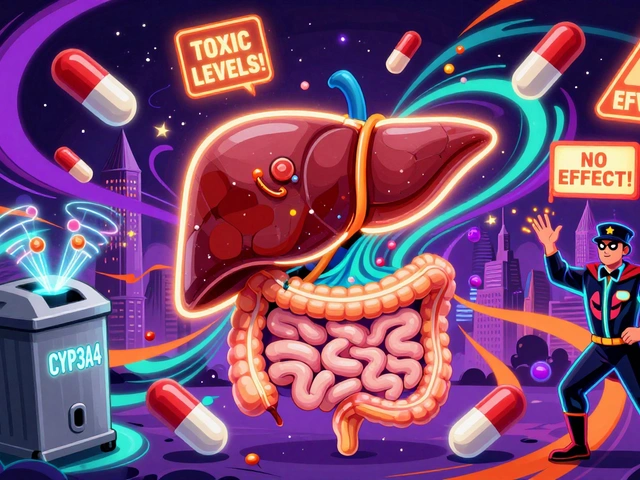Statin Alternatives: Your Guide to Non‑Statin Cholesterol Solutions
When navigating statin alternatives, non‑statin options used to lower LDL cholesterol when traditional statins aren’t suitable. Also known as non‑statin lipid‑lowering therapies, it offers a path for people who experience statin side effects, have drug interactions, or need extra LDL reduction.
Understanding the core players helps you pick the right plan. Statins, the first‑line drugs that inhibit HMG‑CoA reductase to cut cholesterol production are still the gold standard, but they aren’t a one‑size‑fits‑all. PCSK9 inhibitors, injectable antibodies that boost LDL‑receptor recycling for dramatic LDL drops have become a go‑to for high‑risk patients. Meanwhile, bile acid sequestrants, oral resins that bind bile in the gut, forcing the liver to use more cholesterol to make fresh bile provide a low‑cost, well‑tolerated oral choice.
Why Consider Non‑Statin Options?
Many readers wonder if statin alternatives are just a backup or a real solution. The answer lies in three key factors: safety, efficacy, and personal health context. First, safety. Muscle pain, elevated liver enzymes, and drug‑drug interactions push doctors to look for gentler routes. PCSK9 inhibitors, for instance, have a low systemic side‑effect profile because they act outside the liver’s metabolic pathways. Second, efficacy. Some patients need a 50‑80% LDL cut, which statins alone can’t always deliver. Combining a modest statin dose with a PCSK9 inhibitor or a bile acid sequestrant can achieve that goal without pushing the statin dose to risky levels. Third, personal context. Diabetes, chronic kidney disease, or pregnancy often limit statin use, making a bile acid sequestrant or lifestyle‑focused plan the safer bet.
Beyond the big three, diet and exercise remain cornerstones. A Mediterranean‑style menu rich in soluble fiber, omega‑3 fatty acids, and plant sterols can shave LDL by 5‑10% on its own. Pair that with regular aerobic activity, which improves HDL and helps the body process cholesterol more efficiently. For many, a combo of dietary tweaks, a low‑dose statin, and a bile acid sequestrant hits the sweet spot without triggering side effects.
In the list below you’ll find deep dives into specific alternatives—comparisons of PCSK9 inhibitors versus traditional therapy, cost‑effective guides to buying generic lipid‑lowering meds, and practical tips for integrating diet changes into daily life. Whether you’re researching a switch after statin intolerance or simply want to know all your options, these articles give you clear, actionable information to make the right choice for your heart health.
Rosuvastatin vs Alternatives: Which Cholesterol Drug Wins?
A detailed comparison of rosuvastatin with other statins, ezetimibe, and PCSK9 inhibitors, covering potency, safety, cost, and when to choose each option.





